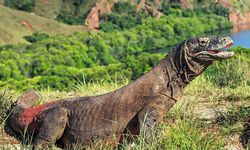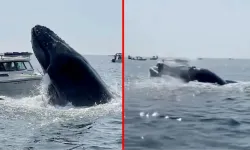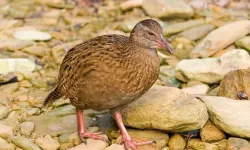Ancient predatory worms dating back about 518 million years have been discovered in North Greenland.
These animals, new to the scientific world, were named Timorebestia, Latin for "beasts of terror".
Their discovery reveals new information about an interesting group of predatory worms that are still alive today.
Arrowworms, also known as chaetognaths, are endangered marine predators that prey on small zooplankton in the ocean.
Compared to today's worms, which range in size from about 3 to 100 millimeters, Timorebestia is about 30 centimeters in size.
MAY BE ONE OF THE OLDEST CARNIVORES
Dating back more than 518 million years, this giant worm found at a fossil site is believed to be one of the earliest carnivores that could hunt in water.
They were strange-looking creatures with long antennae and an impressive set of jaws inside their heads. This distinguished them from their conspecifics, which had their jaws on the outside.
While a worm the length of a ruler may not sound that scary to modern Homo sapiens, it was a significant threat to other animals living in the sea during the golden age of Timorebestia.
"Our research shows that these ancient ocean ecosystems were highly complex, with a food chain that allowed for several layers of predators," senior study author Dr. Jakob Vinther from the Schools of Earth Sciences and Biological Sciences at the University of Bristol said in a statement.
"Timorebestia were giants of their time and would have been near the top of the food chain. This makes it of equivalent importance to some of the top carnivores in modern oceans, such as sharks and seals in the Cambrian period."
The study was published in the journal Science Advances.
RULED THE OCEANS FOR 15 MILLION YEARS
Morten Lunde Nielsen, a former PhD student at Bristol and part of the current study, said: "Timorebestia ruled the oceans before arthropods appeared.
Vinther estimates that their reign may have lasted 10 to 15 million years before they were displaced by more successful animals.
"WE HAVE MORE EXCITING FINDINGS"
"We are very excited to have discovered such unique predators in the Sirius Passet," said Tae Yoon Park of the Korea Polar Research Institute, the study's other senior author and field expedition leader.
In a series of expeditions to Sirius Passet, located at the farthest reaches of northern Greenland at more than 82.5 degrees north, we have collected a great diversity of exciting new organisms.
Thanks to the extraordinary preservation on Sirius Passet, we are also able to uncover exciting anatomical details such as the digestive system, muscular anatomy and nervous systems.
We have many more exciting findings to share in the coming years that will help show how the earliest animal ecosystems looked and evolved."















